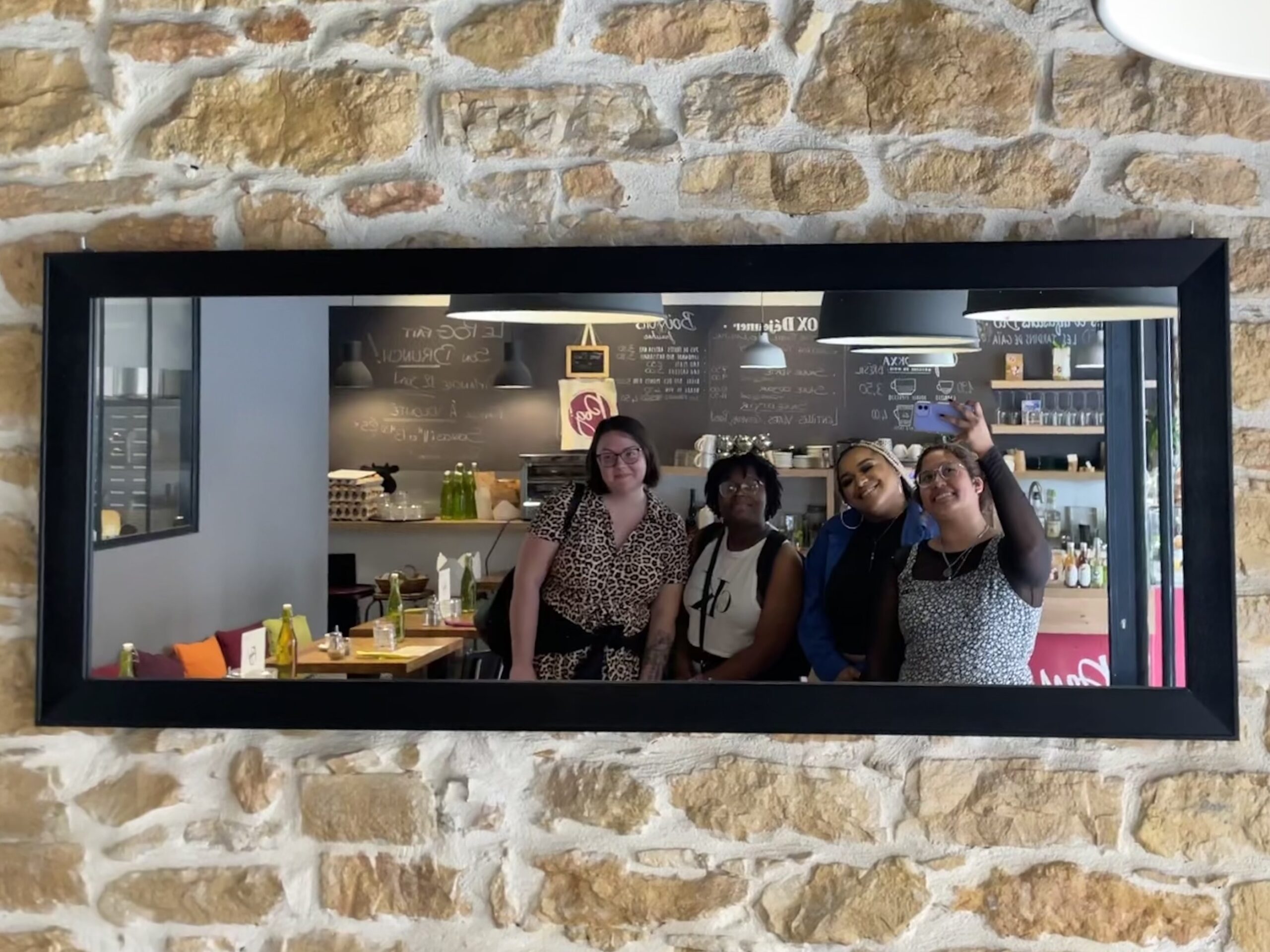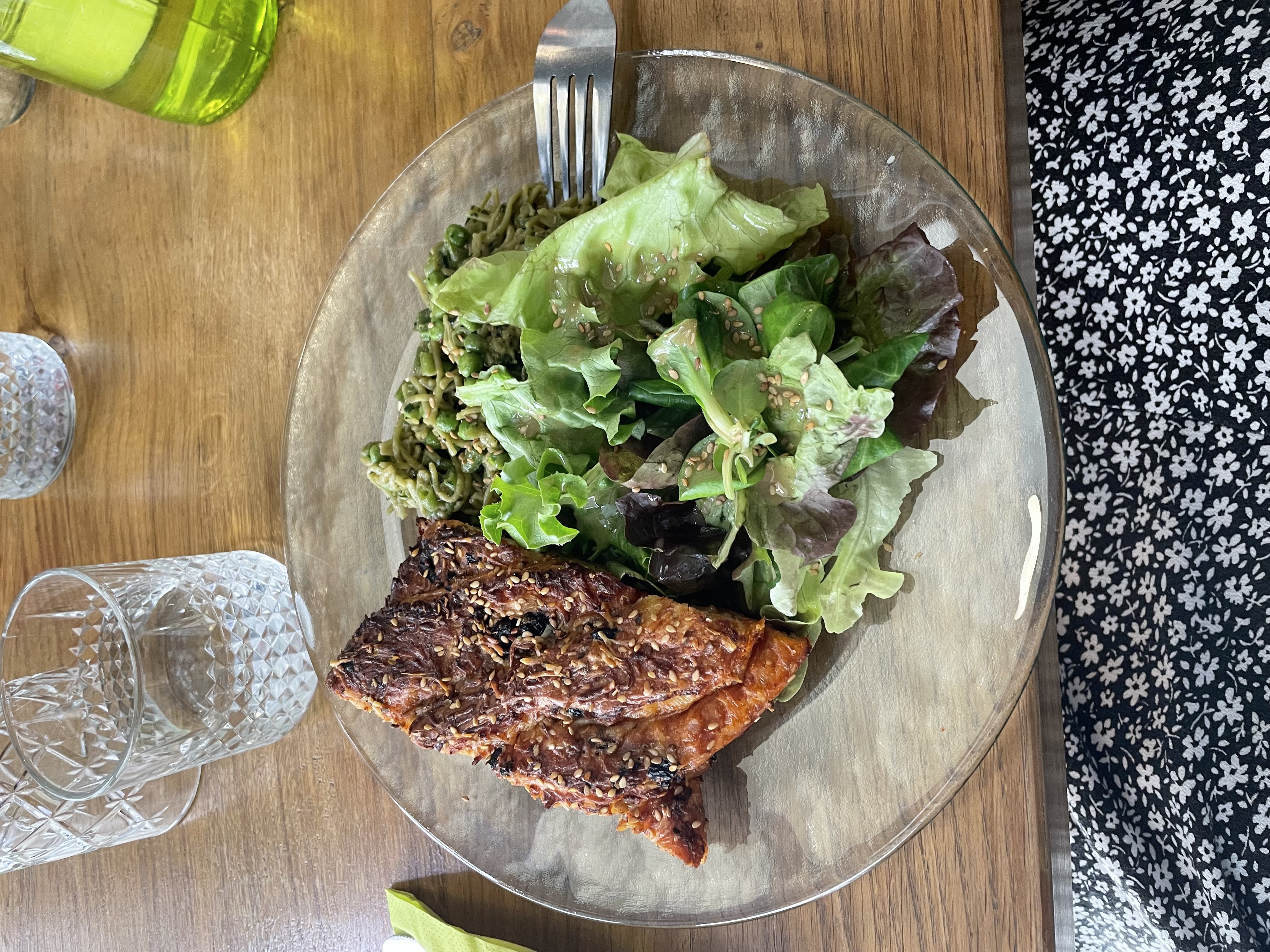
language barriers
Countries
Majors
Regions
“Bonjour!” I blurted in response to a fruit merchant’s frenzy of French words. My host mom, Madame Levy, chuckled back at the merchant before they exchanged words. Throughout our first visit together to one of Lyon’s open-air markets, I kept my eyes lowered on her poussette de marché as I trailed behind her, only looking up to give approval or disapproval of the chosen vegetables and fruits when asked. I was funneled by French numbers being shouted; melons and oranges thudding into bowls; the exchange of euros for produce; and the wrinkling of plastic bags cramming into personal shopping carts. Having pushed our way through the narrow stand setups and clusters of people, I was caught off-guard by the duration of their conversation.
As we headed back to the apartment with the wind rehoming tree droppings in our eyes, she asked if I understood the merchant. Warmth on my cheeks spread as I admitted to my lack of comprehension. Slowing the speed of her French, Madame Levy informed me the merchant asked which country I came from and welcomed me to Lyon’s 10th arrondissement. After this missed opportunity to explain my background and why I was in France, I rehearsed saying, “I’m a Mexican-American student and I’m here to better my French.” In French, of course. I’ve found this introduction (specifically my student identity) justifies my choppy French pronunciation. Here, the people who know French and English are less likely to switch to English after learning this. Following requests to repeat myself and confirmation to continue the conversation in French, I most often hear “Très bon!” and “Aimez-vous Lyon?” afterward.
People often acknowledge a French conversation being practice for me. One of my favorite examples of this was my first time going into the café pâtissier around my host university with friends: Pog! The owner offered to speak English at first, but once we told her we were studying French, she took back what she said and emphasized our lunchtime being a practice opportunity. In French, the owner explained how the meal combinations worked and the ingredients. My friends and I compared our understandings, in Fren-glish, to reach conclusions of what the owner had said and asked questions as needed. This process has been beneficial not only when eating out in groups, but also in classrooms and my homestay.
Since we eat dinner together daily, I’ve had the most French conversations with Madame Levy. Whenever she’d plan for the next day’s dinner, she’d ask me how I felt about X ingredient. Before resorting to images and google translate, we describe color and texture, as well as what the ingredient is often paired with. If my French doesn’t suffice to get my message across, I act out “the scene”. The charades method is more likely to end with google translate than the other methods. I march on with my blushing as I unglue my eyes from text and have French conversations to know more about food choices.
Pictured: My friends and I at Pog! and mozzarella brioche.

